Stance, Slide, Street: The Ishikawa Body 𝑵𝒊𝒔𝒔𝒂𝒏 𝟷𝟾𝟶 𝑺𝑿
Nissan 180SX: The Drifter’s Dream and JDM Icon
Few cars have had a greater impact on the world of drifting, street racing, and car culture than the Nissan 180SX. Launched in Japan in 1989, the 180SX combined sharp styling, turbocharged performance, and rear-wheel-drive dynamics into an affordable, tuner-friendly platform. Today, it stands as a beloved icon of the golden era of Japanese performance cars.
Origins: A Split Identity
The 180SX was Nissan’s fastback counterpart to the Silvia, both of which were based on the S13 chassis. While the Silvia came with a fixed coupe body style, the 180SX was designed with a liftback rear end and pop-up headlights, giving it a sportier and more aggressive appearance.
Naming:
- 180SX (Japan): Named for its original 1.8L engine
- 240SX (North America): Shared the body but came with a 2.4L engine
- 200SX (Europe): Often used the SR20DET or CA18DET, depending on the market
The 180SX was sold exclusively in Japan, making it a true JDM classic.
When it comes to JDM tuning royalty, few cars capture the underground spirit of the scene like the Nissan 180SX.

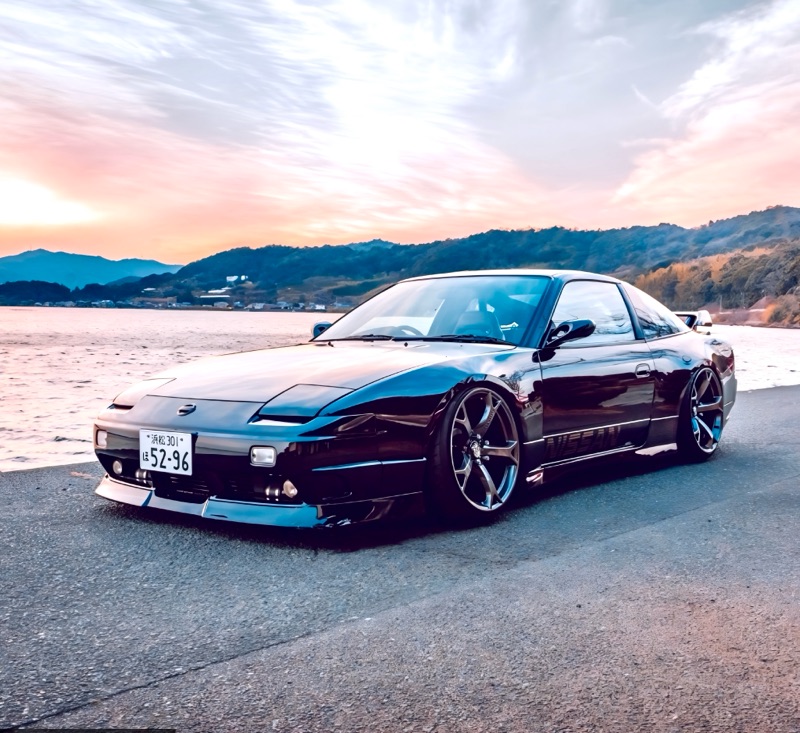
Styling and Design
From the moment you see a 180SX, it’s clear it was built for fun.
Key Design Features:
- Pop-up headlights (a favorite among 90s enthusiasts)
- Long, sloped fastback design
- Optional factory aero kits and spoilers
- Two-tone color options on early models
- Flip-up headlight motor test switch in the cabin (yes, really)
Its sleek, low-slung profile helped define the look of 90s JDM tuning culture, and it remains a popular base for visual customization and widebody conversions.

But the Ishikawa Body-tuned version? That’s in a league of its own.
Born from the streets of Japan and sculpted with precision, this 180SX is a perfect fusion of stance culture, drift-ready engineering, and raw street appeal.
With its aggressive widebody kit, slammed ride height, and signature Ishikawa lines, this machine doesn’t just sit pretty—it demands attention.

Engine and Performance
The 180SX evolved through several generations with different engines, but all models shared the same rear-wheel-drive layout, MacPherson strut front suspension, and multi-link rear setup, making it a joy to drive.
Early Models (1989–1991):
- Engine: CA18DET (1.8L turbo inline-4)
- Power: ~170 hp
- Torque: 225 Nm (166 lb-ft)
Later Models (1991–1998):
- Engine: SR20DET (2.0L turbo inline-4)
- Power: ~205 hp (varies slightly by year)
- Torque: 275 Nm (202 lb-ft)
- 0–100 km/h: ~6.0–6.5 seconds
- Top Speed: ~225 km/h (140 mph)
Transmissions were either 5-speed manual or 4-speed automatic, though manuals are by far the more desirable choice today.
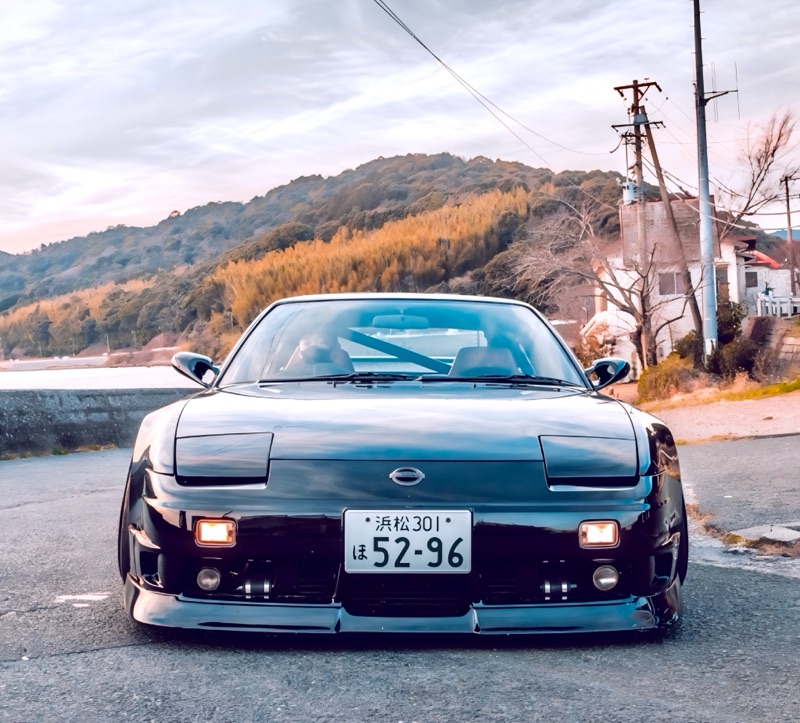
Trim Levels and Special Editions
Over its production run, the 180SX came in multiple trims, including:
- Type I / Type II: Base models with minor cosmetic differences
- Type X: High-spec model with upgraded aero, LSD, and ABS
- Type R / Type S: Naturally aspirated SR20DE variants for lower insurance/tax in Japan
The Type X, with its aggressive aero, digital climate control, and factory LSD, is now the most sought-after variant by collectors and tuners alike.
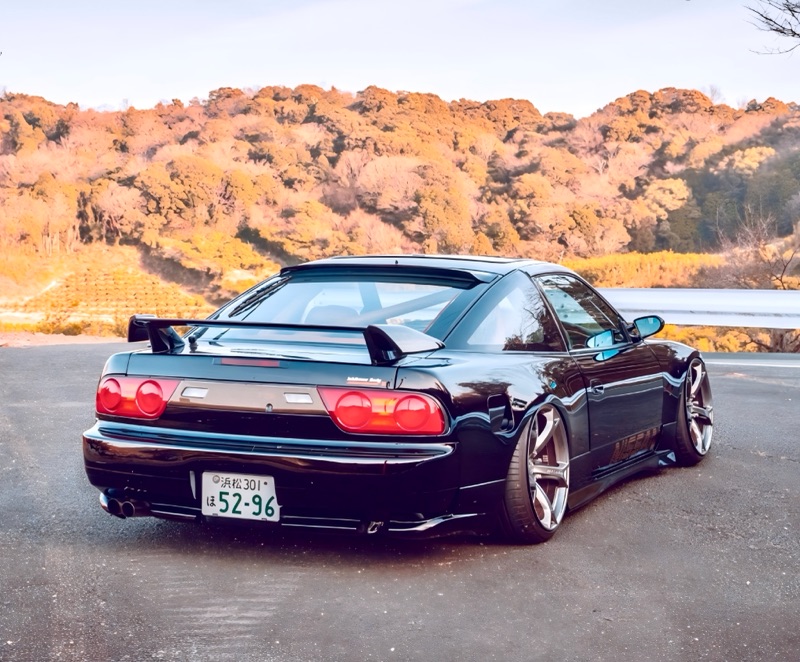
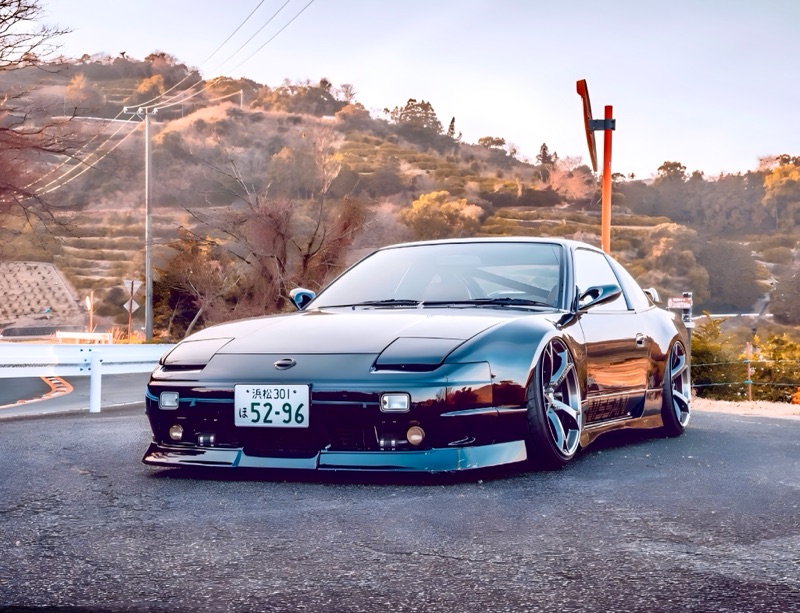
The Ishikawa Body name carries serious weight in the grassroots drift and stance scenes of Japan.
Emerging in the early 2000s, Ishikawa’s shop in Gunma Prefecture quickly became a hotspot for local drifters and street crews.
Known for their unique aero designs and clean, functional builds, Ishikawa Body helped define the aesthetic that blurred the lines between show car and drift missile. They weren’t building trailer queens—they were building street legends.
The 180SX platform, with its nimble chassis and SR20DET heart, became a favorite for tuners and touge warriors alike. In the early D1 Street Legal days, cars wearing Ishikawa kits started popping up at tracks like Nikko, Mobara, and Ebisu—striking the perfect balance between aggressive styling and functional grip.
Over time, Ishikawa’s builds started influencing tuning styles across the globe, from Osaka to SoCal.
Under the hood, this particular build is all business—SR20DET, tuned and turbocharged for responsive midrange power, paired with a welded diff and coilovers dialed for both slide and stance.
Whether it’s clipping apexes or laying down smoke on Tokyo Bay’s midnight runs, the Ishikawa 180SX is a masterclass in Japanese tuning artistry.
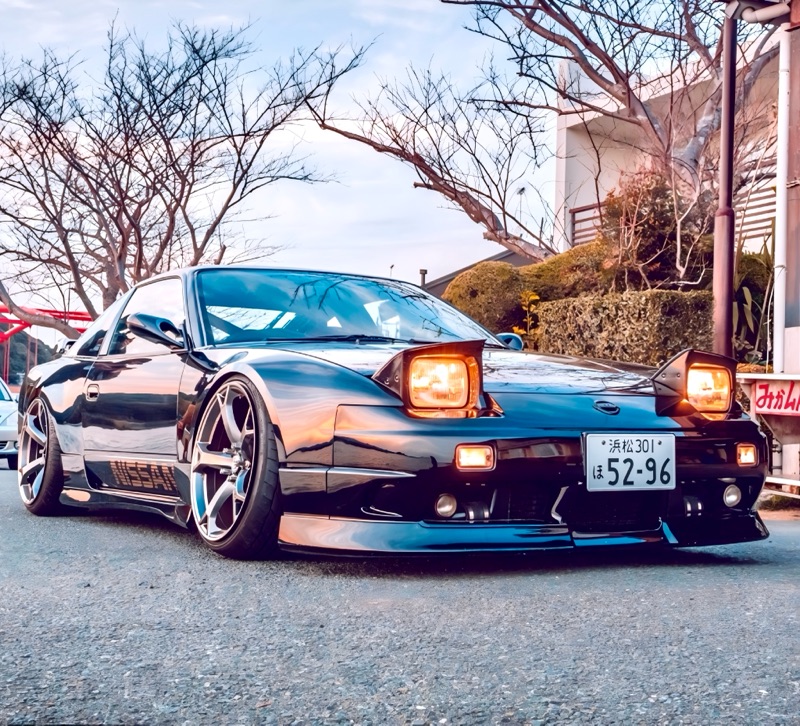
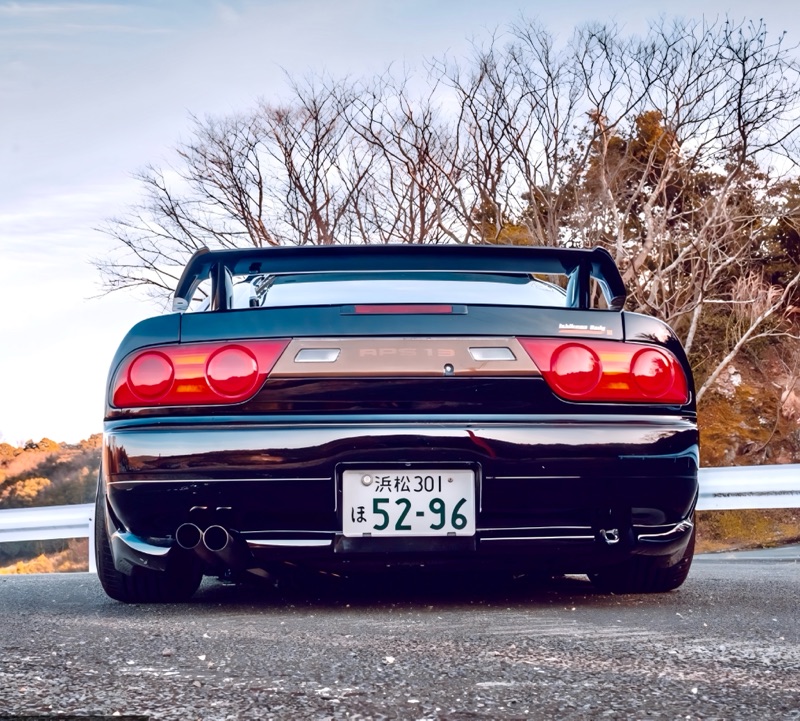
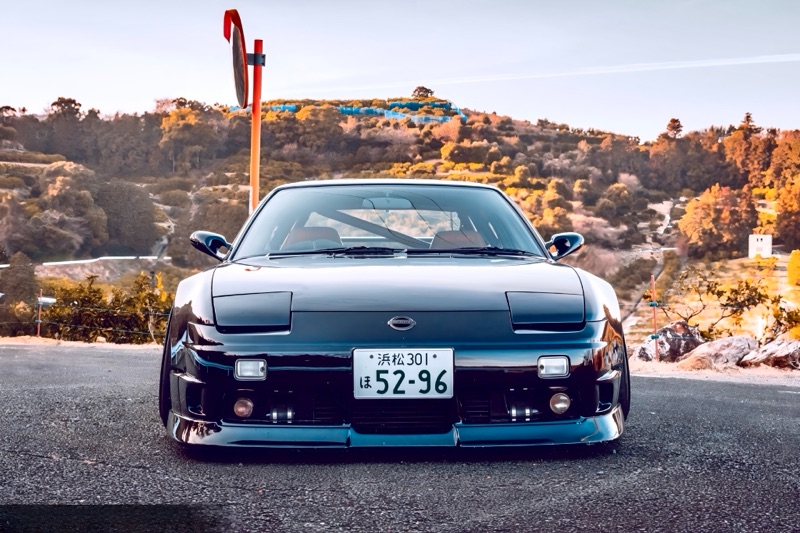
The Drifting Legend
The 180SX earned its place in history thanks to its dominance in the early days of drifting. Light, balanced, and endlessly tunable, it became the car of choice for legendary drifters like Katsuhiro Ueo and Kazuhiro Tanaka, and featured prominently in Option Video, D1GP, and countless street racing compilations.
Its popularity was further boosted by appearances in:
- Initial D (driven by the character Iketani)
- Gran Turismo and Need for Speed series
- JDM Option and early YouTube drift culture
Modding and Aftermarket Support
If there’s a car that defines the tuner scene of the 90s and 2000s, it’s the 180SX.
Common Mods:
- SR20DET upgrades (turbo, injectors, ECU tuning)
- S15 6-speed swap
- Suspension upgrades for drifting or grip
- Widebody kits (Rocket Bunny, Origin Lab, BN Sports)
- Sil80 conversions (Silvia front + 180SX rear)
Even today, parts are widely available thanks to the car’s cult status and shared chassis with the S13 Silvia and 240SX.
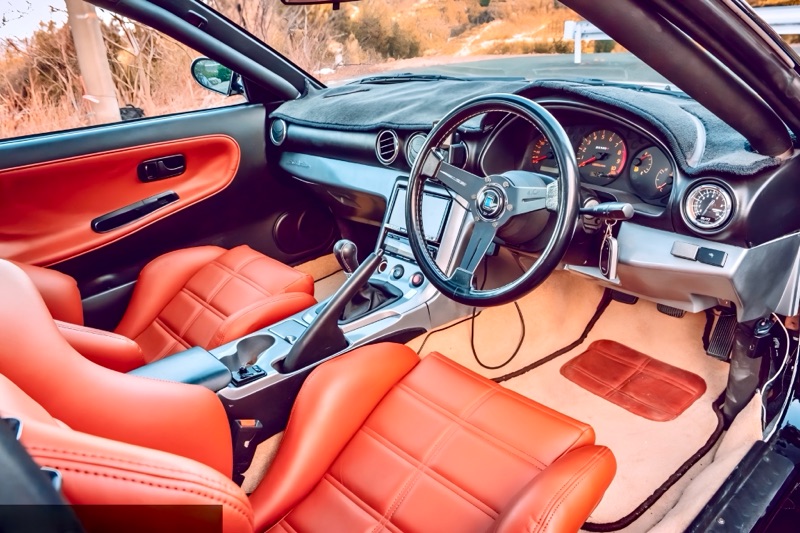
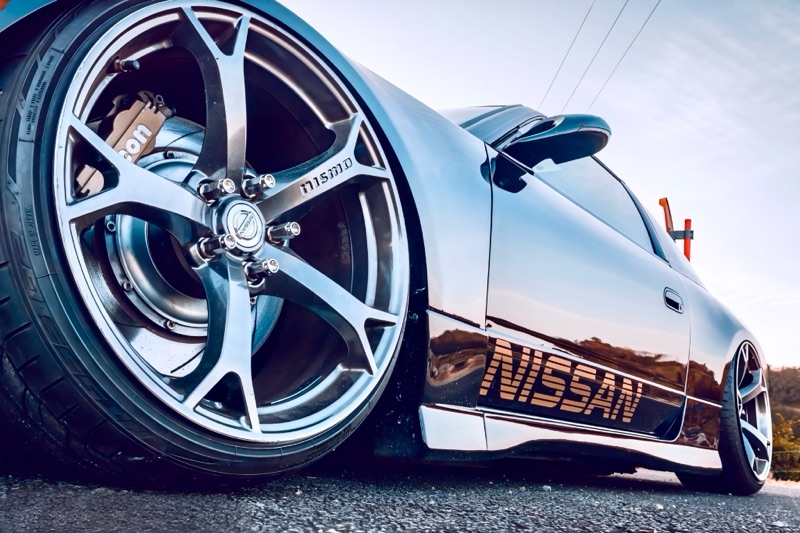
The 180SX Today: A JDM Investment
With the rise in JDM collector car interest, the 180SX is becoming harder to find in unmodified, rust-free condition.
Final Thoughts
The Nissan 180SX is a legend born of a golden age — lightweight, turbocharged, rear-wheel drive, and endlessly customizable. It helped define the drifting scene, inspired a generation of tuners, and still looks just as good sideways today as it did 30 years ago.
Whether you’re a nostalgic JDM fan or a new enthusiast discovering this classic, the 180SX remains one of the best expressions of Japanese performance car culture.
This isn’t just a car—it’s a piece of JDM culture. A symbol of the era when tuning was raw, rebellious, and ruled by passion, not algorithms.
Comments
Post a Comment